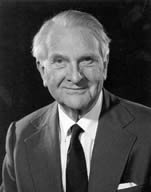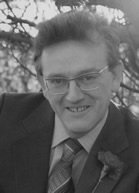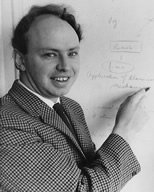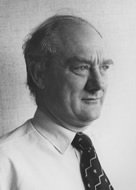
A Short History of the Formative Years of Macro Group UK
Background
In the early 1960’s the young discipline of polymer science was strong in only a few academic institutions and in centres of the UK chemical industry. The subject soon became more wide-spread and stronger than several more-established activities. Nevertheless, polymer science had no well-defined forum for discussion or organizing conferences. While founded on high-quality and innovative science, polymer (or macromolecular) science was denigrated as inferior, deemed as dealing with ill-defined, ill-characterized, impure materials unworthy of serious consideration. Some academics, who “accidentally” made polymers by new reactions, cheerfully admitted to throwing such products away.
Professional chemistry was “organized” within The Chemical Society, The Society for Analytical Chemistry, The Royal Institute of Chemistry, The Faraday Society and The Society of Chemical Industry (SCI). SCI was mainly concerned with chemistry allied to the chemical industry, while a major function of The Royal Institute of Chemistry was professional qualifications. The Chemical Society was the home for academic organic and inorganic chemists; physical chemists looked to The Faraday Society for professional activity; The Society for Analytical Chemistry was the natural home for analytical chemists. Many polymer scientists based themselves within The Faraday Society. In university chemistry departments, polymer science was usually located within physical chemistry, with studies of reaction kinetics, polymer properties and characterization techniques. Chemical aspects of the subject were out on a limb, with polymer syntheses undertaken within physical chemistry.
The Conception
This, in essence, was the atmosphere within which Macro Group UK was conceived and had its gestation. Subject groups had developed within The Chemical Society, but none dealing with polymer science; SCI had a Plastics and Polymer Group dating from the 1930s. The Plastics and Rubber Institute, a large technology-based organization also existed. The only other forum was The British High Polymer Research Group, now The High Polymer Research Group, an independent group that organizes a high-level annual conference. With no relevant group activities within The Faraday Society or The Chemical Society, like-minded individuals formed independent groups, viz: The Polymer Degradation Discussion Group (PDDG) and The Ionic Polymerization Discussion Group (IPDG).
In the 1970s, The Chemical Society, The Faraday Society, The Society for Analytical Chemistry and The Royal Institute of Chemistry agreed to merge to form The Royal Society of Chemistry (RSC). The proposed RSC made room for a Polymer Physics Group (PPG) but no polymer chemistry group! This caused uproar and it was from IPDG that Macro Group UK had its foundation. The prime movers from IPDG were Drs D.H. (Rick) Richards (Ministry of Defence, Waltham Abbey) and A.F. (Tony) Johnson (then at Bradford University). Professor C.H. (Bam) Bamford FRS, Professor of Industrial Chemistry at The University of Liverpool (ex-head of the then Courtaulds’ Fundamental Research Laboratory) who had complementary interests and authority especially in the kinetics of free-radical polymerization and of poly(alpha-amino acid)s, was asked to assemble a committee to consider formation of a group. Prior to the final merger of the chemistry societies, The Chemical Society agreed to form The Macromolecular Group (but certainly not a Polymer Chemistry Group!) under its auspices and within its Industrial Division in 1972. Bam became chairman, Rick secretary and Tony treasurer of this embryonic group.
The Gestation
The Macromolecular Group instantaneously became one of the largest groups in The Chemical Society, with a stable membership of over 1000 members. It immediately adopted the more usable short title of Macro Group and established the Bulletin (twice a year), which later on became joint with PPG, and organised free meetings for 6th form teachers to provide information on polymer science.
At one of the first conferences organised by The Macromolecular Group, an eminent speaker from the USA flew in, first class, gave his talk and left! It was probably after that conference the Group’s bank balance was reduced to about 3s-6d; 17.5p in current money. Nevertheless, the Group survived, organized successful, financially-viable meetings and grew in membership. A symposium on “Chromatographic Fractionation of Macromolecules” organised by Dr Roger Epton (of the then Wolverhampton Polytechnic) helped rescue the immediate situation.
As The Macromolecular Group grew stronger and more active, overlap and potential conflict with SCI’s Plastics and Polymer Group was obvious. Attempts to avoid overlap of symposium topics, and to promote joint activity, led to a proposal to form a joint Group under the auspices of the SCI and the RSC, as it emerged from its creation through merger of the other chemical societies which was formally completed in 1980. As the philosophies of the two Societies were very different, negotiations took three years. Simplistically, RSC was paternalistic in supporting its subject groups whereas SCI looked to its groups for financial support. Nevertheless, the Groups pushed ahead and the RSC and the SCI established a joint group, The Pure and Applied Macromolecular Group, in 1979, which continued with the short title of Macro Group UK by which it is widely-known today. This established Macro Group UK in its current form. Its first Chairman was Bam, the Secretary was Rick Richards and the Treasurer was Tony Johnson. Macro Group UK continued to develop into a highly successful and active component of the UK scientific community. It has always organised successful series of meetings, both one-day and larger international symposia.
Growing Up
In 1980 a large two-day conference was held in Liverpool to mark Bam’s retirement from the University. That was quite a party. Many of Bam’s international friends and colleagues, past and present, attended and gave papers. Bam was an accomplished violinist and a highlight of the final dinner was a virtuoso performance by Bam of the César Franck violin sonata in which his daughter Stephanie (a concert pianist) accompanied him. The performance was quite remarkable as he had not played for several years and had only just recovered from “halothane hepatitis” following a series of eye operations. The symposium produced a very healthy financial contribution to further secure the viability of Macro Group UK.
Bam retired as Chairman in 1983 to be replaced by Rick, with Dr G.C. (Geoff) Eastmond (University of Liverpool) taking over as Secretary and with Dr W.W. (Bill) Wright (Royal Aircraft Establishment, Farnborough) soon replacing Tony Johnson as Treasurer. Several things happened around this time and mostly simultaneously.
There was a view that Macro Group UK should have an in-house journal. Of the three UK-based polymer journals, only British Polymer Journal (BPJ) was published by a learned society, the SCI. Despite BPJ being almost defunct, in 1983 SCI accepted a proposal for BPJ to be Macro Group UK’s house journal. The profile of the journal was certainly raised, but changes relating to BPJ, undertaken without reference to Macro Group UK, caused disquiet and the link was eventually dropped.
Some pictures from the 1970s of the key people involved in the creation and establishment of Macro Group UK (from top left to bottom right): Professor C.H. “Bam” Bamford (founding Chairman 1972-1983); Dr. D.H. “Rick” Richards (founding Secretary 1972-1983 and Chairman 1983-1986); Professor A.F. “Tony” Johnson (founding Treasurer 1972-1984); and Dr. G.C. “Geoff” Eastmond (Secretary 1983-1986 and Chairman 1986-1989).
Political Action
Research funding in UK universities has always been problematic, but a very serious situation had developed by 1982. The Science and Engineering Research Council (SERC), the relevant research funding agency in that period, had greatly enhanced the funding available for polymer engineering. This was not new money and, in effect, polymer science funding was lost to engineering. Polymer engineering was in a bad state at the time, but the loss of funding was disastrous for polymer science. Rick, as Chairman, and Geoff, as Secretary, took the unusual step of entering politics and led a fight to try to regain funding. Very sadly, Rick died in 1986. Geoff, then as Chairman, with Dr. J.R. (John) Ebdon (Lancaster University at that time), as Secretary, and others, continued the battle. Direct approaches to SERC and government departments were unfruitful but momentum grew. In 1987 a 2-day symposium was organised at the University of Birmingham to discuss the state of polymer science in the UK, with representatives of SERC, industry and government invited. In a serious and rational discussion on the parlous state of funding, industrialists gave unqualified support for the funding of fundamental polymer science in the universities to underpin their activities. People there, far more influential than us, took the message on board. The combined campaign continued at the time when Interdisciplinary Research Centres (IRCs) were being established. In May 1988 there was a surprise announcement that, in the second tranche of IRCs, there would be an IRC in Polymer Science and Technology. Final pressure possibly came from the Department of Trade and Industry but Macro Group UK undoubtedly had a role in generating support for the U-turn. This move, followed by further support for polymer science, changed the atmosphere which later led to the Innovative Polymer Synthesis Initiative in the 1990s, and the generally improved funding of polymer science research that persists today.
The D.H. Richards Memorial Fund
As already mentioned, soon after formation of Macro Group UK, its second Chairman Rick Richards, an active innovative scientist, died. This was a major blow to the polymer community and, in recognition of his contributions, Macro Group UK established the D.H. Richards Memorial Fund to provide bursaries for young researchers to attend conferences. This fund, supplemented by surpluses from conferences, continues to be an important aspect of the Group’s activities.
International Relations
By the mid-1980s, several countries had established polymer groups. There was a proposal from The European Science Foundation to explore the possibility of combining these groups and this led to the formation of The European Polymer Federation (EPF) in 1984. Negotiations took place while Rick was Chairman; PPG and The Plastics and Rubber Institute were also included from the UK. Initial discussions took place in Brussels and at a critical meeting at Bischofsheim, Alsace. The concept of a Federation, with no central administration or funds, was readily accepted. There was considerable wrangling over the constitution but Rick was instrumental in convincing everyone to agree to an English-style unwritten constitution, and not one in which every detail of what was and was not allowed was specified.
Geoff proposed a series of European polymer conferences on neutral territory. With no academic polymer research in Luxembourg, an attractive central location, the idea was for Groups to take turns to organize meetings there. The French Group, who held the initial Presidency of the EPF, stepped in and organized a first conference in Lyon in 1987. Nevertheless, the first, and still probably the only, polymer conference in Luxembourg was held under the title MacroLux ’88. The first session (opened by the State Secretary to the Economy of Luxembourg) was held in the splendid European Parliament building. This successful conference boosted Macro Group UK’s finances, but other European Groups took a more parochial approach, preferring to organise meetings in their own countries during their Presidencies.
Championed by Roger Epton, 1986 saw the first in a series of “Macromolecules” conferences which were held in conjunction with the Division of Polymer Chemistry of the American Chemical Society. These conferences began life at St John’s College, Oxford and had a longer run (through to 1999) before being superseded by the more recent quadrennial Polymer Synthesis conference series.
Written by Geoff Eastmond 2007




